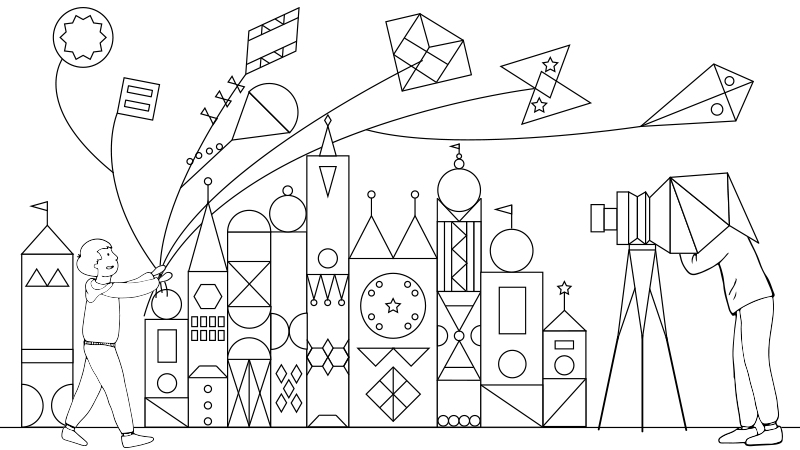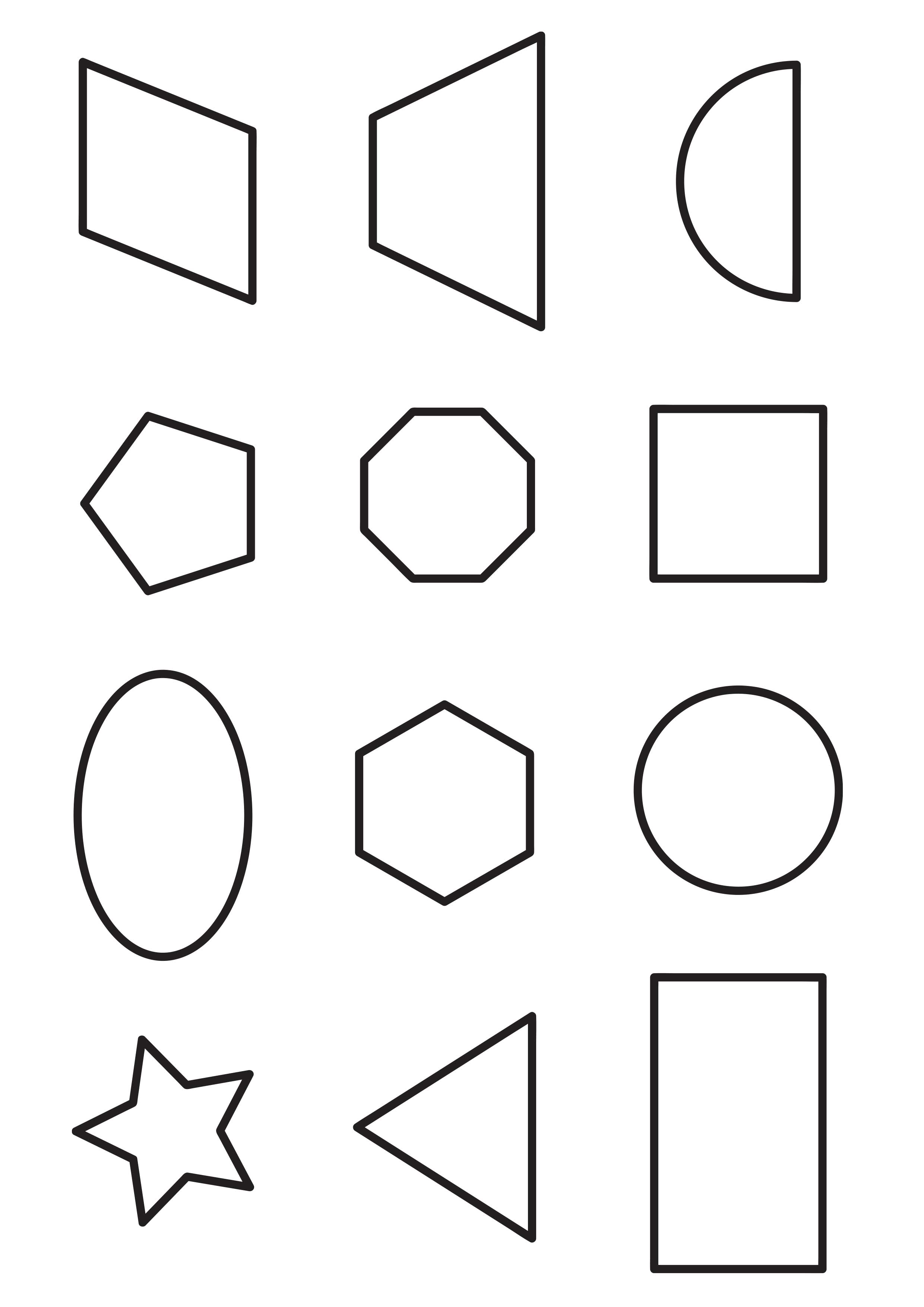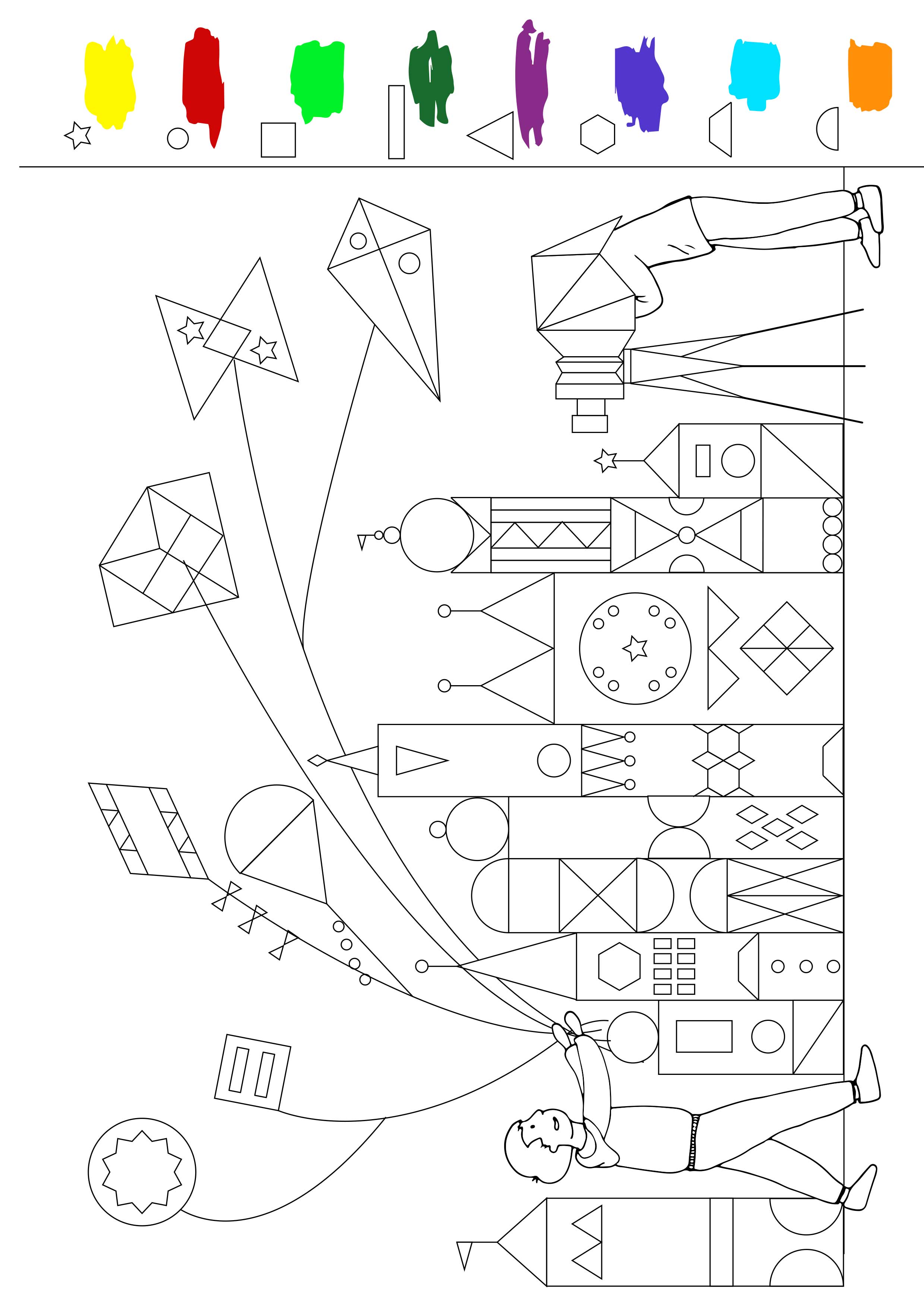Short description of the topic
This activity encourages children to recognize different shapes and colors. Children discuss geometric shapes, lines, and colors, search for them in their environment, take photos, and make posters.
Learning outcomes
-
Competencies
- Visual competence: focusing on details, determining and treating a single element of a multitude (e.g. the color red from the entire color spectrum)
- Mathematical competence: pattern recognition (geometric shapes and lines)
- Motor competence: strengthening movement coordination
-
Target group
4 years and up- Individual photographic activity, group discussion, and commenting
-
Required materials
- Camera
- Computer
- Printer
-
Materials
- Worksheets for learning geometrical shapes, colors, and concepts
- Worksheet for the “Shape-hunt”

Download
(.pdf 567.12 KB)
Description of the activity (step by step)
Preparation:
In a group, talk about different shapes and colors that surround us. Ask children what shapes they know. Then, play a game. Show a picture of a shape (for example a circle) and ask children to look around the playroom and try to find something that has the same (or similar) shape. Everyone brings the item on the carpet and puts it next to the corresponding shape. Discuss the colors of the found objects and explain what oblique lines are. Tell the children that they are going to go and look for three things: something round, oblique lines, and something red. They can search inside or on the playground.
Implementation:
Creative work consists of finding and photographing the following three subjects: a circle (an object with a circular shape), oblique lines, and the red color. Encourage children to act as autonomously as possible and to take the initiative in the creative process. The order in which children photograph shapes and colors is not important. The same is true for the total number of photographs that are to be made. When the time for photographing is over, the first group of children hands over the cameras to those waiting. Ask the children who have completed the task about their first impressions. Then, record the authorship of the photos, save them on the computer in the appropriate files, and create a selection to review and comment.
Reflection:
Come together as a group again. Comment the photographs together and do not forget to encourage children by asking questions about what they have noticed. Ask the children to share and relive their experiences with the creative process. You may create three posters with a selection of the photographs – a poster for all-round shapes, one for lines, and one for all red things.
Variations and additional ideas
Participants may enrich the creative process by bringing domestic coloring/picture books and toys that contain or are connected to shapes and colors.
Play a game: show children shape and ask them to name an object with that shape as fast as possible.
Children can go on a “shape-hunt”. Print out the worksheets with different shapes and instruct children to find and photograph an object that corresponds to each shape. Make a poster for each shape. Glue the printed shape in the middle and photographs of the corresponding objects around it.
Background information and didactical perspective
Our world is colorful and comes in many forms. Children are aware of these aesthetic facts intuitively but they may not necessarily already be able to differentiate between geometric shapes, lines, and colors. The purpose of our activity is to guide and assist the child in this mental process. However, we may come across children having difficulties recognizing certain colors or colors in general. We should also pay attention to possible problems with spatial coordination or pattern recognition.
Experience from kindergartens:
The children were drawn by the idea to find different patterns, colors and lines. At that time, construction workers tore down an old fence around the kindergarten and replaced it with a new, taller, safer one. The situation itself encouraged the children to observe the old and new fences. The children compared the fences and looked for details and differences. We expanded the activity to observe and photograph the fences around the kindergarten. The children perceived different patterns, lines, colors on the fences. We pasted the photos of the fences on a sheet and the children continued drawing the fence.












